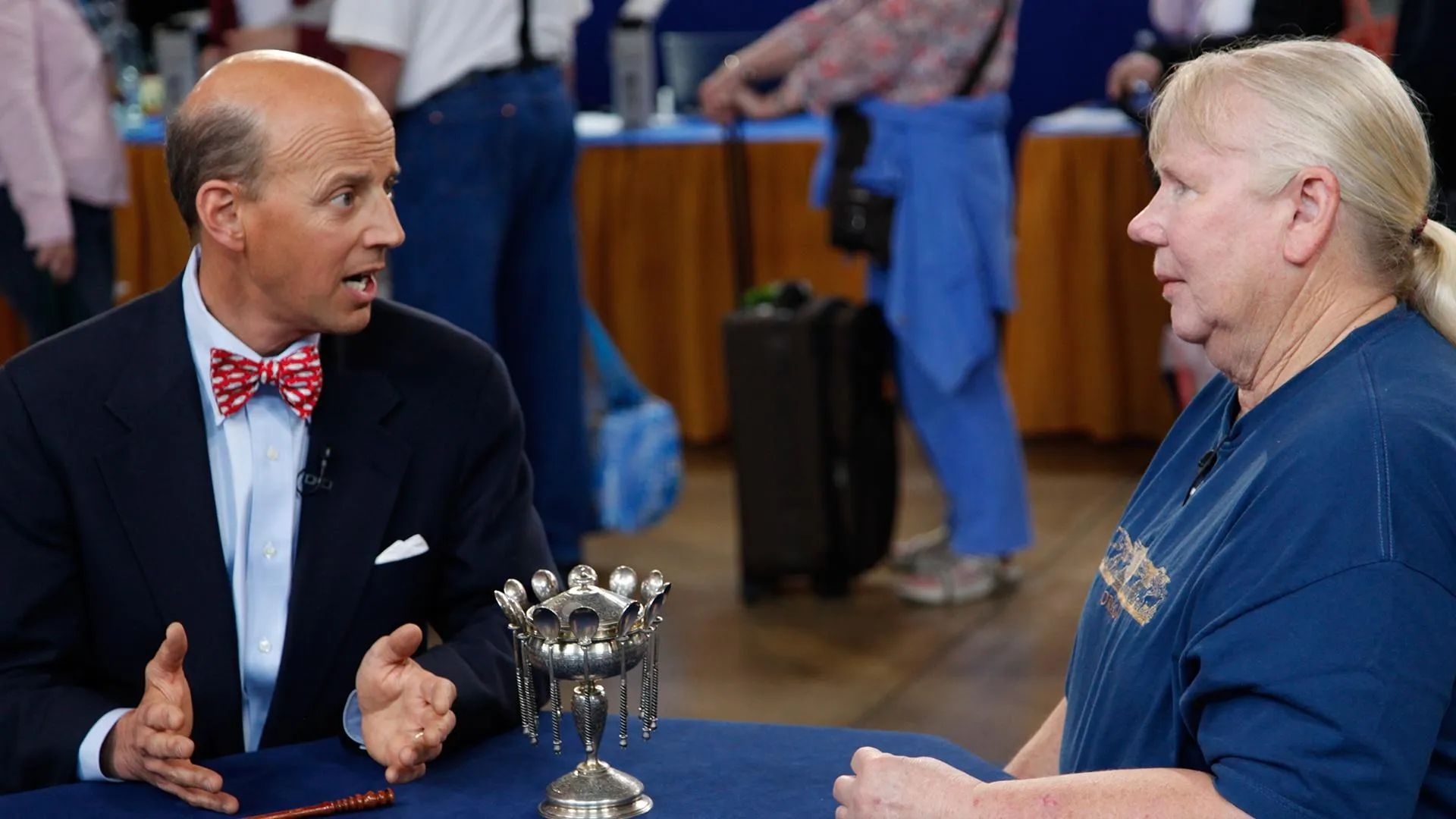GUEST: My mother purchased these in an estate sale probably 30 years ago, and she told me she thought she paid maybe $100 for them. Every time we go and visit my parents, they give us something to take home with us and so she gave us these and here we are.
APPRAISER: These are called "The Four Freedoms."
GUEST: Right.
APPRAISER: And they're a series of four posters, and the posters were based on a speech that President Franklin Roosevelt gave on January 6, 1941.
GUEST: Okay.
APPRAISER: And this was basically as America was just beginning to get into the Second World War, and Roosevelt's speech to Congress was aimed at preparing America for the coming war,
GUEST: Oh, okay.
APPRAISER: To step up war production, and to prepare the populace for the inevitable battles and tribulations that were yet to come. And I would like to read you the words that he used that Norman Rockwell based these posters on. Roosevelt said that, "In future days, which we seek to make secure, "we look forward to a world founded on four essential human freedoms." These were the freedom of speech, the freedom from want, freedom from fear, and freedom of worship. And Norman Rockwell took it upon himself to illustrate these four freedoms. And he did these four paintings-- these were originally paintings-- and he showed them to the Office of War Information.
GUEST: Okay.
APPRAISER: ..and said, "I would like to give these to you to use to promote the war."
GUEST: Wow.
APPRAISER: And the government said, "Thank you, but no, thank you," and actually turned him down.
GUEST: Oh.
APPRAISER: Norman Rockwell was working for the Saturday Evening Post as an illustrator, and he'd done many, many covers for the magazine.
GUEST: Right.
APPRAISER: And the Saturday Evening Post used these images in February and March of 1943, and the public reaction to those images was so palpable that the government then approached Norman Rockwell and said, "By the way, we'd actually like to use these on posters."
GUEST: Okay.
APPRAISER: And what happened was the government took the four paintings, and took them on tour across America…
GUEST: Wow.
APPRAISER: ..and used that as part of the fund-raising drive. And if we look closely at the bottom, we'll see on them they say "O-W-I", which is the Office of War Information. We have the date they were printed, 1943, and then very curious for government posters, it says, "Additional copies may be obtained upon request from the Division of Public Inquiries." The government was selling these posters as a further way to raise money.
GUEST: Oh, all right.
APPRAISER: The government issued them in three different sizes. These are the largest of three sizes.
GUEST: Okay.
APPRAISER: They each measure about 40 inches wide by 60 inches high. They're all folded.
GUEST: Yes, I know.
APPRAISER: But you know what? That's okay. Because they were issued folded, and they were mailed to people in envelopes.
GUEST: Wow.
APPRAISER: So we call these folded-as-issued. Now, they were so popular, they were printed by the hundreds of thousands. I'll be honest, I don't know how many were printed.
GUEST: Wow.
APPRAISER: But there were a lot of them.
GUEST: Oh, sure.
APPRAISER: They're not that rare. But what I've never seen, ever, is all four of them displayed at the same time, and we get such a sense of their monumentality, and we get a feeling for what it was like to be on the streets in the 1940s and see these up on billboards. It’s truly spectacular. They are really iconic American images. These posters appear at auction with some regularity, and I would estimate the four at $4,000 to $6,000 for the group.
GUEST: Oh, that's great!
APPRAISER: They still command such a strong price, in large part because they're so large, but also because they're so wonderful.
GUEST: Yeah. Thank you, that... I think they're beautiful. I can hardly wait to tell my mom.
APPRAISER: Right on.
GUEST: She did good.
APPRAISER: She sure did.
GUEST: Thank you.



